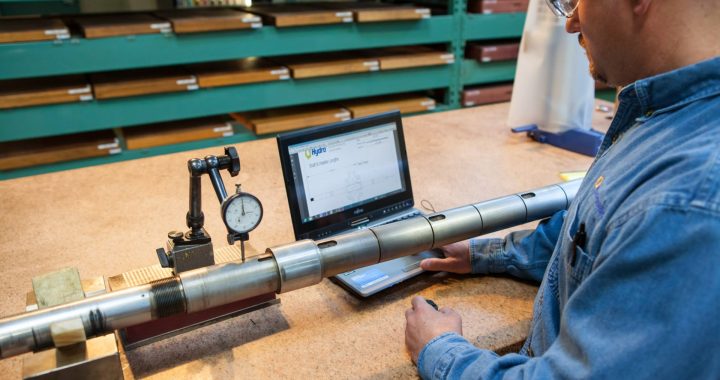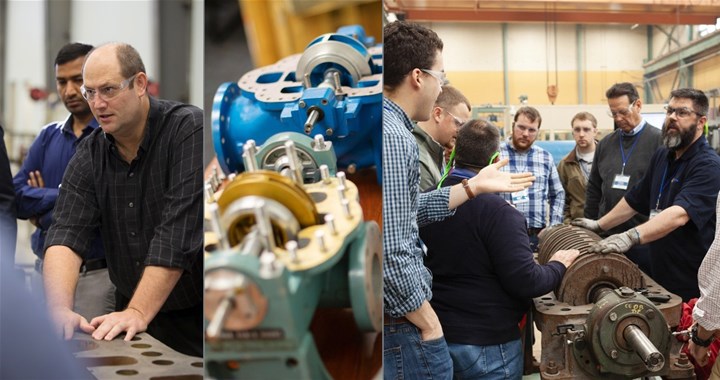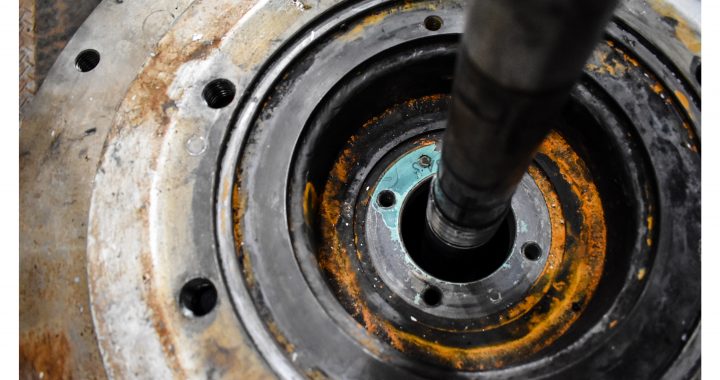In May’s webinar, instructor Bob Jennings introduces the building blocks of a best-in-class inspection process and shares the essentials of writing a proper and meaningful work scope.
Tag Archives: inspection
Training Focus
Many industries are facing a difficult situation as they struggle to maintain operational excellence of an aging asset base. The difficulties that come with older equipment have been aggravated by a loss of institutional knowledge that accompanies the mass retirement of an aging workforce.
In today’s competitive work environment, new talent with experience in the field is difficult to attract and retain. This often leads to a reduction in employee number and employee specialization; workers are taking on greater and increasingly diverse responsibilities with little time to focus beyond immediate needs. The lack of resources and knowledge has made the development of long-term proactive strategies extremely difficult.
The fundamental trend away from abundant, qualified talent is the underlying source of increases in maintenance costs, unexpected downtime events, more rework, longer cycle time for solving failures, and other problems that are negatively affecting plant profitability.
One solution is workforce training to replenish and even increase the essential knowledge necessary to effectively operate at acceptable profit margins. Customary training however will not achieve desired results for the following reasons:
-
- The training material does not fully address the workforce requirements for satisfactory job performance
- Retention of information provided in the classroom is extremely low leading to uncertainty and errors when engineers are challenged with solving specific site issues or technicians are executing routine maintenance activities
- The required information and/or process is not available at time of need
- The required information is not formatted consistent with the visual digital world of the new-age employee
- The workers trained are no longer employed, have been reassigned to other job responsibilities, or are not actively engaged in the required task.
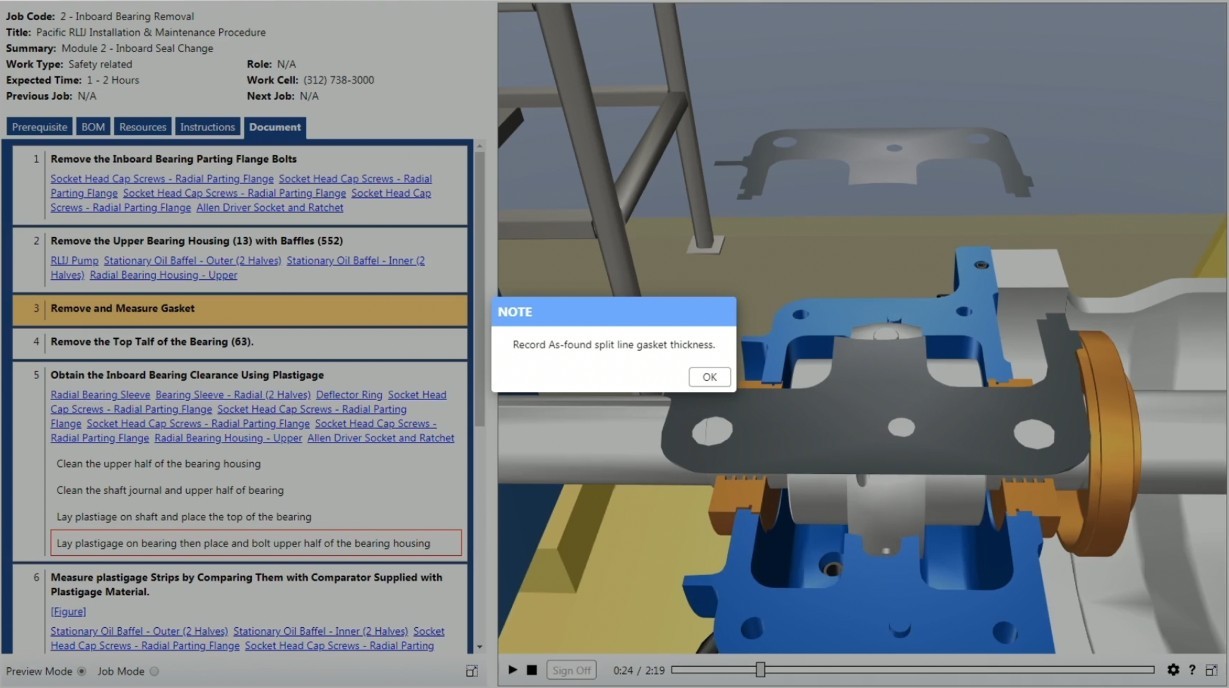
Providing a Sound Foundation
The first step in developing a successful training program is ensuring that the material being presented is aligned with the daily job responsibilities of those being trained. Many training classes provided by OEMs are focused on the selection and application of their various products. While important for those who are purchasing new equipment, this does not address the many needs associated with operating, maintaining, and troubleshooting existing equipment.
Training should provide a foundation of knowledge directly associated with the skills they need in their role. For engineers, this includes focus areas such as vibration fundamentals, failure modes organized by equipment type and observed condition, system assessment, and energy savings. Engineer training should (1) provide a base of knowledge to more effectively and efficiently perform their job function and (2) provide familiarity with internal and external resources available to supplement their own capabilities during troubleshooting and analysis. For maintenance professionals, training should focus on the form, fit, and function of components and best practices for inspection and maintenance of equipment; wherever possible, maintenance training should incorporate hands-on skill development.
Just-In-Time Resources
Even when the material being presented is directly applicable to the trainee’s job function and includes hands-on instruction, material retention is still a pervasive problem. Studies have shown that, on average, only 10% of classroom material is retained a week after the training is concluded. With this in mind, what options are available to ensure that foundational training provides the intended benefit?
Making training resources available for continuous reinforcement and just-in-time training will extend the benefit of classroom training and bolster material retention. Providing access to recordings of the training material and supplemental material for further enrichment will allow trainees to continue to engage with the material. It will also allow review of any relevant information as needed when problems arise.
To support a reduction in maintenance errors, a review of existing procedures should be undertaken in tandem with the classroom training. This review will ensure that best practices taught in training are in alignment with site material. Upgrading existing procedures to include illustrations or animations of critical steps can also significantly improve work performance.
For training in any department, providing training resources in a digital format is essential. Digital resources introduce the material in a format that matches the learning style of the new generation of workers and offers interactivity and self-pacing.
Increasing Retention
The final piece of a successful training strategy focuses on application of the learned information. Facilitating use of the training material in the real world will greatly increase retention and identify areas where the trainee has questions or needs more clarity.
Applying knowledge in the field by instituting a mentorship program with internal and external subject matter experts not only supports material retention, it also supports worker retention. Mentorship programs communicate that the company is investing time and resources in worker development, help workers go beyond “putting out fires” to solve real problems, and deepen employees’ relationships within the company.

Ready to institute a successful training partnership? As an unbiased expert in the pump aftermarket, Hydro has developed training resources that range from single classes to long-term training partnerships. To learn more, read about Hydro University or browse our schedule of upcoming seminars and webinars.
Note: This article was originally published as a native ad with BIC.
Full Refurbishment for Island Refinery
The process of reopening the plant had uncovered more than 500 pumps that needed considerable refurbishment and repair. The most important of these was a critical jet pump used for hydraulic decoking. It was badly damaged and sent to the original equipment manufacturer (OEM) for inspection. The OEM recommended that the refinery replace most of the pump parts, as well as a costly repair that would require 35 weeks to rebuild.
Viable alternative
Instead, the refinery sent the pump to global aftermarket pump service provider, Hydro, Inc. in Chicago, where it was refurbished for just over half the cost of the OEM proposal. The time involved was also significantly improved to just eight weeks by using a non-destructive evaluation and rebuild process at a 46,000 ft2 facility where Hydro develops and implements engineering modifications for improving the performance of critical pumps and then verifies that performance in their Hydraulic Institute certified test lab.
Significant reopening
The original refinery opened in the mid-1960s. In the early 1970s, it was re-rated at 650,000 barrels per day. It had been one of the largest refineries in the western hemisphere, so the impact of reopening the plant would be significant. In this case, Hydro was tasked to work with the critical highenergy pump to prepare for its reopening. The new owners began the process two years ago and it is expected that the plant will be open for operation in the first quarter of 2020. Once restarted, the plant will be able to process up to 210,000 barrels per day of oil, a fraction of the 1,500- acre (607-hectare) plant’s peak capacity in the 1970s of 650,000 bpd.
When the plant was shut down, the pumps and other equipment in the refinery were either left in place or went into storage where they were kept in poor condition. Time constraints prohibited proper preventative maintenance before the refinery shut down. The tropical climate is hot, salty, humid, oppressive, and several hurricanes occurred during this time. All of these extreme conditions can contribute to the deterioration of heavy rotating equipment. Over the course of the year, the temperature typically varies from 72°F to 88°F and is rarely below 68°F or above 90°F. Continue reading
Engineering Analysis Resolves Startup Issues at Middle Eastern Plant
 During the commissioning and startup of an alumina processing plant in the Middle East, a significant recurring pump issue was causing delays to the commissioning of the facility. When de-energizing the equipment, the live steam condensate vertical can pumps experienced repeated failures of all installed units. These seizures occurred at both the design fluid temperature and when pumping cold water.
During the commissioning and startup of an alumina processing plant in the Middle East, a significant recurring pump issue was causing delays to the commissioning of the facility. When de-energizing the equipment, the live steam condensate vertical can pumps experienced repeated failures of all installed units. These seizures occurred at both the design fluid temperature and when pumping cold water.
Because this was a new plant in the commissioning phase, the equipment was under warranty. However, negotiations with the OEM were lengthening the challenged startup schedule. There was little insight into the root cause of the equipment failure.
As the repeated failures were affecting the plant commissioning date, the large architect, engineering and construction (AEC) firm in charge of plant commissioning decided to contact an independent, aftermarket service provider located in Dubai, United Arab Emirates, to conduct an assessment to determine the root cause of the pump failures and provide solutions.
Source: https://www.pumpsandsystems.com/engineering-analysis-resolves-startup-issues-middle-eastern-plant
Wireless Condition Monitoring Optimizes MTBR
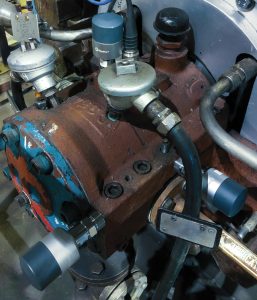
Working in partnership with the plant condition monitoring team, the PIEs installed a total of nine SDOF (Single Degree of Freedom) wireless vibration sensors on the pump and drive.
Alerts, advanced analysis, and automated reporting help to improve maintenance strategies and critical asset decision-making.
A power plant in Southeast Australia had recently experienced chronic high vibration amplitudes on a critical multistage boiler feed water pump. Given the criticality of the pump and the risks associated with catastrophic pump failure, the power plant contacted Hydro Australia for support.
In collaboration with Hydro, Inc.’s wireless condition monitoring team, Hydro Australia was able to provide the power plant with a significantly improved IIoT-based monitoring system. This would assist the plant by closely monitoring the status of its asset, making the best possible decisions for equipment maintenance, and ensuring equipment availability
Source: https://www.pumpindustry.com.au/wireless-condition-monitoring-optimises-mean-time-between-repair

